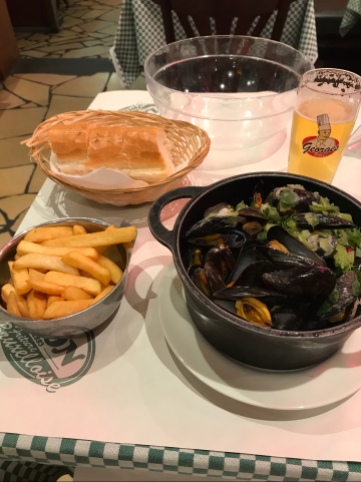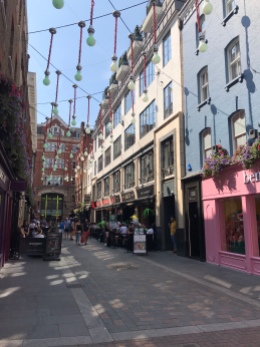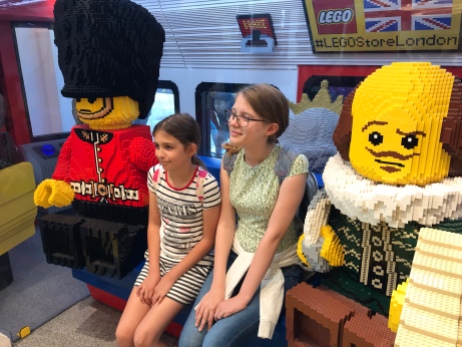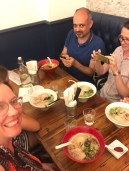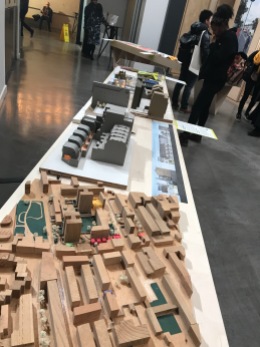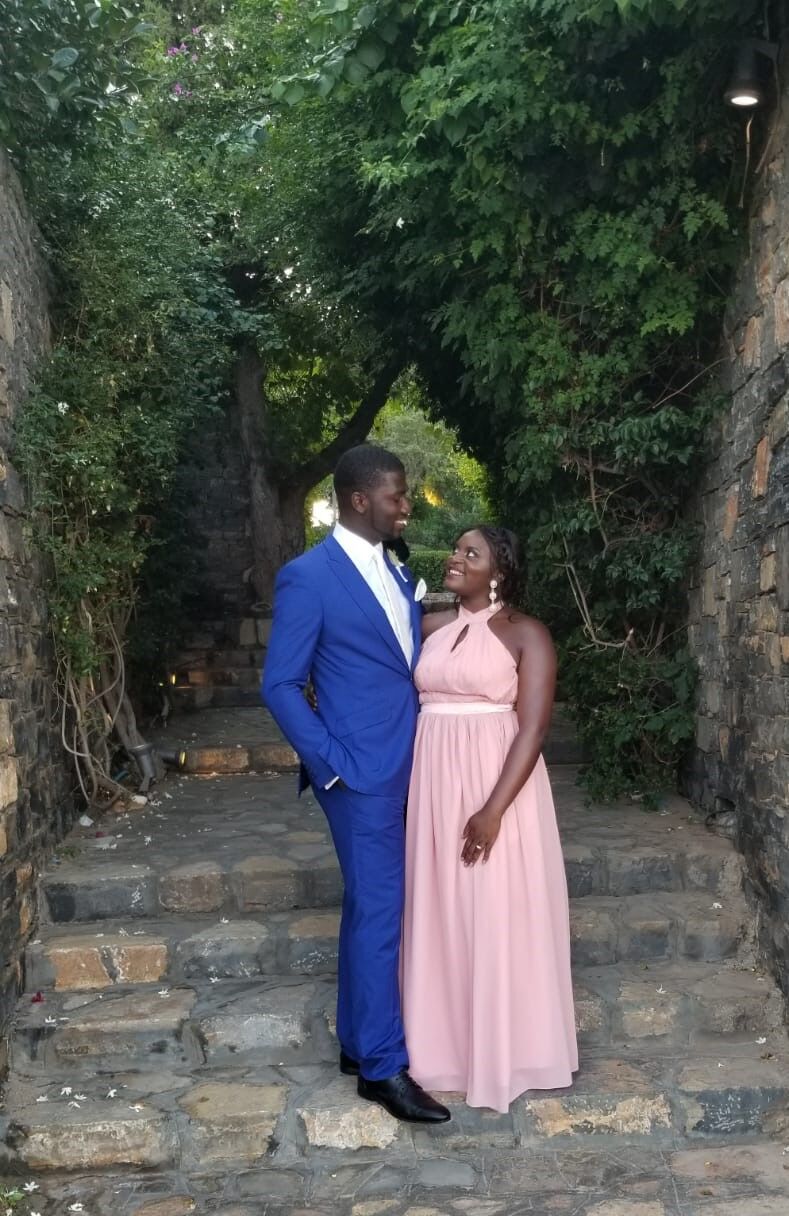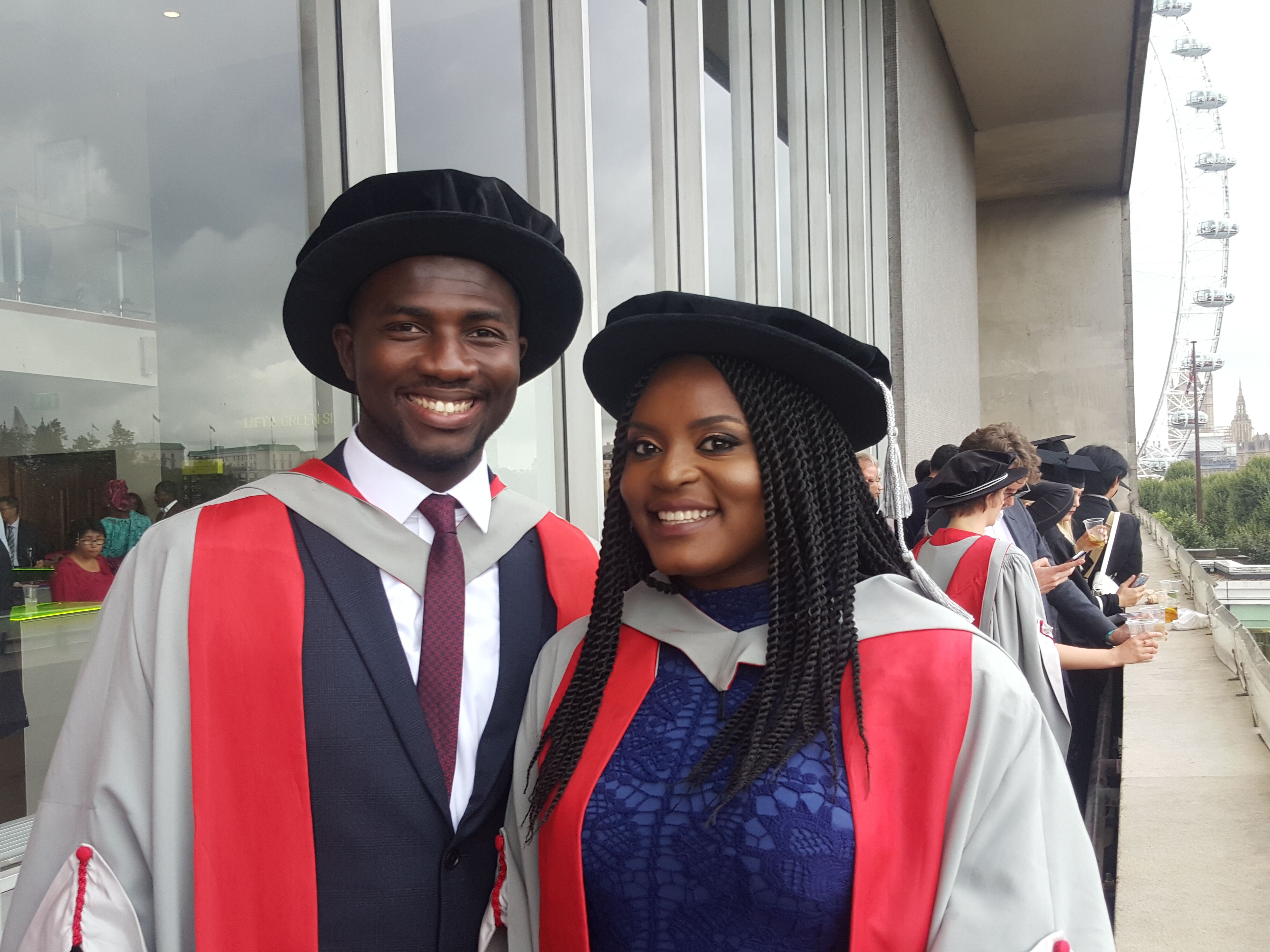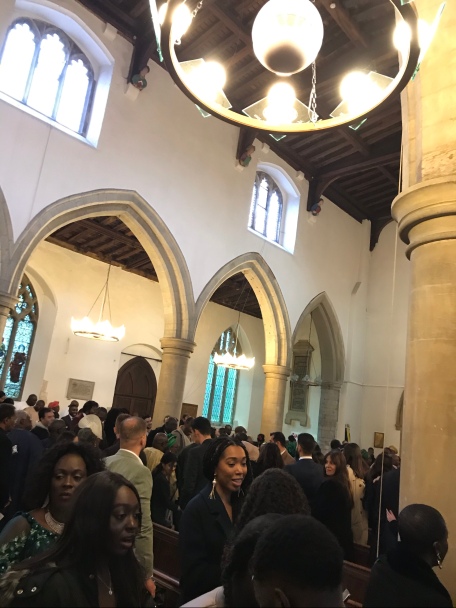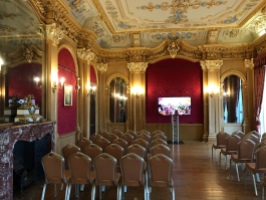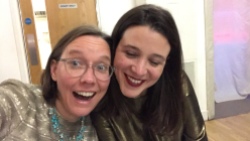Losing a parent is emotionally difficult as I’m discovering each and every day. Others who have lost someone close provide the strongest sense of empathy–they know what we are going through and they offer shoulders on which to lean.
I truly appreciate all those who have sent a message or note, flowers, donations.
Those who gave their presence in these difficult days and made thoughtful gestures now hold a very special place in my heart. Those who made the kind effort to join us for Dad’s visitation, funeral, or interment helped provide a sense of confidence that tomorrow will be happier.
Through this blog post, I am bringing my Dad back into focus, if only for a moment. I aim to record my memories before they vanish.
Memories of our Dad
My dad, Donald Massie, truly loved to learn. This he passed to my sister (Heather) and me.

Dad with Heather and me.
Dad always said Heather and I should try hard in school, for ourselves, not for him. “Your education,” he’d say, “is the only thing no one can take away.” …Bette Midler says it’s your dignity, but that actually can be taken, I believe!
Dad taught Heather and me many things, including how to guide our own learning—how to identify goals, determine what we wanted to know, and figure out how to accomplish learning it. Dad didn’t do our projects for us, as Heather pointed out at his funeral, but he was always there to help.
Dad was an extremely curious person, and he demonstrated his love of learning from the very start. As a small child, he read the Encyclopedia Britannica. This set of books occupied an entire shelf at my grandparents’ house, in all the years they owned it.

Christmas 2017 or 2018: Shannon, Aongus, Heather, Danny, Glen, Dad, and Kitty Lee.
Even before Dad could read, he’d pour over the pages, avoiding whatever he could from the illustrations, my aunt Kitty told us in Dad’s final days, as we three–Heather, Kitty and I–gathered around Dad’s bedside, supported by the phenomenal nursing staff at Showalter Center and end-of-life experts from Carillion Clinic Hospice. Those were precious days we had together, and a priceless gift provided by those caring medical experts. Showalter’s culinary and administrative folks worked with us and nursing to make the week we had there together full of love and laughter. Dad was truly funny in the moments he could communicate; it was clear he’d built rapport with staff of all ages and backgrounds, and some of the residents like Sharon who became a fast friend to us all. Many of them came to call in Dad’s final week, and Heather helped connect to family via phone and friends and former colleagues who came to visit.
But back to the story of Dad’s lust for learning: he particularly loved reading Popular Mechanics and Scientific American, and any flying magazine he could get his hands on!
Dad also loved trying things out for himself. We learned to learn by doing, just as he had.
At the age of two, he’d observed how a gear shift worked and he gave it a go himself. He climbed up in the driver’s seat of the family Jeep and kicked the manual transmission out of gear. The Jeep rolled down the hill, wrapping around a tree, totaled. He clung happily to the steering wheel.
He’d also as a toddler, we are told, remove the screws from the furniture with his bare hands—so curious was he about how the chairs and table were assembled.
Growing up in the family farm in Fishersville, Virginia, provided many adventures for a kid with curiosity. Dad observed how to use a flexible tube to siphon liquid from a barrel. “No,” the doctor told my grandma, “he isn’t sick,” just a little drunk! Evidentially, that barrel contained hard cider.
Dad wasn’t the only kid in the family stirring up trouble.
Dad’s brother, Phil, was a few years older than him. One day Phil tied Dad to a tree while playing cowboys and Indians. Unexpectedly invited into town by their dad, Phil disappeared. When Phil remembered about my Dad, tied up to that tree, Phil kept mum. No one wanted to earn the ire of my grandad.
Dad spent the day there, strung to that tree.
Their family moved off the farm and into the city of Staunton.
Dad had a newspaper delivery route and he got to know my mom’s brother while doing that job. Dad played clarinet in the school band. He made friends he kept until the very end.
In high school, he got drafted. He got a limited deferment. He married my mom; he hurriedly completed a Bachelor’s degree—starting in Engineering but having to wrap up quickly to meet the limits imposed by Uncle Sam and thus shifting to Business.

Dad with a newborn, me!
He and Mom decided to have a child before he shipped out for Vietnam, and I was born while he was in boot camp.
My sister came along, like clockwork, not long after his return. There are two-and-one-half years between us. The four lives of my immediate family were indelibly marked by that (senseless) war, in so many ways. Night duty and Agent Orange were particularly treacherous. Of course, I’d wish the whole thing away if I could, but I also recognize that, without that bloody war, Heather and I would not exist.

Dad at work in Vietnam–so handsome!
In Vietnam, Dad served as an illustrator. In formation, fresh off the plane to Vietnam, his group of recruits was asked if anyone could draw. Hearing no other volunteers, dad put up his hand. Those years studying engineering made a clear difference.
Eventually, he combine that Business degree and illustrating experience, extending it with a Masters in Fine Art gained upon his return using the GI Bill. He subsequently worked as a photographer for the state of Virginia and then supervised the graphics department at the Vet School until his retirement, after 30 years with Virginia Tech.
I have to mention that Dad was the type of parent with kids in tow: he encouraged us to participate in clubs (especially 4-H where we learned so very much), band, and sports. He didn’t volunteer to run these events. He never attended a PTA meeting.
But he was in our corner nonetheless, cheering us on during every performance and award ceremony—and for those there were many.

I was the friady-cat!
During childhood, adolescence, and young adulthood, Heather and I spent many hours at Dad’s office—in the Annex during the 80s and the Vet School later on. We knew Dad’s colleagues well and we learned well from them. We were superbly advised and equipped for any art or photography project we could dream up. And dream we did.
I lived at home for university. Many lunchtimes during my Architecture studies were spent at the Ver School, surrounded by the professors and staff there–engaging in their enthusiastic lunch-time chat.
Many a night during my Bachelor’s and Master’s of Architecture programs were spent in the darkroom with Dad, rushing toward a deadline and/or creating photographic competition boards.
I adopted Dad’s drafting and jewelry equipment as my own. I learned 16mm film and to use 2.25 and 4×5 cameras. I passed on these skills, leading workshops and modules for Virginia Tech’s College of Architecture and Urban Studies across my years there.

Dad’s beloved Musketeer.
He took us and just about everyone we knew up flying. A particularly poignant memory is flying to the site I’d chosen for my Bachelor’s thesis project on Outer Banks of North Carolina. Two friends from architecture school came along, and we timed our landing, two hours out, so that we’d touch down at sunrise. What a glorious day we had, documenting and exploring the island, walking into its town from lunch, splashing in the waves.
The year before in my fourth year of architecture school, Dad and I had rolled up our sleeves and started building a two-seat airplane. We commenced this project in our living room. Dad, my sister, mom, and I had built this house for ourselves.
Soon, the project got too big and we had to construct a large greenhouse on the side of the house.
Dad kept working on that project after I’d completed two Architecture degrees and left town for employment, first in Switzerland (1996-1997) and then in Hampton Roads (1998-2014). Unfortunately, Dad was diagnosed with carcinoid cancer in 1997. It was slow-growing but took its toll nonetheless. The vets doing research on cancer helped dad determine the right dose of Vitamin C to take throughout the day to extend his life as long as it did. Dad beat it for 22 1/2 years beyond his diagnosis.
We never finished that plane-building project, but last spring we donated all it, along with the materials we purchased to help finish the project, to Bototeourt Vocational high school (BTEC). Here’s hoping they can finish it or at least learn from what we’ve done!
These memories–all these memories. I must keep them alive.
My sister also wrote a beautiful and sincere tribute to Dad, and I want to share it as well.
My sister’s tribute to Dad

Photo of Donald Rae Massie – high school senior photo
Donald Rae Massie, my daddy, the world is different without you.
I could always rely on you when I had a question about anything.
I always said that you knew everything. One of the sharpest people I have ever known. With a memory I can only dream of having.
And ready to crack a joke to the very last. You liked to laugh.
When I was a kid and you were watching 60 Minutes, you would yell “Andy Rooney” and I would run through the house, to sit with you and watch and laugh.
When Jay Leno would do Headlines, you would yell “Headlines” and I would run through the house, to sit with you and watch and laugh.
At Christmas when we would give someone in the family a Jeff Foxworthy book, we would all sit and read and laugh until we cried, tears of joy.
Thank you for the love you gave me for irony and for a good laugh.
You were always ready to lend a hand, to help, to teach, to share.
Any project Shannon or I worked on was made better by your advice, your lending of tools, and your guidance on how to use them. We have heard from so many others who have said the same.
We learned to use cameras, compose photographs, develop prints, build our house, use power tools, solve problems, love people of all cultures and backgrounds, and have become strong independent women
I recently learned something that makes me very proud. While you were not keen to fight in Vietnam, you did not try to avoid serving, as those who were able to do so were those who came from wealth and privilege, and those who could not were poor, less advantaged, or of color, and you chose to stand with them and to serve. I thank you for this, even though this service caused so many of the health problems which you so valiantly battled.
Thank you for the love you gave me for nature and beauty – sunsets and oceans and mountains and wildlife and for living.
Thank you for my love of science – of light, of stars, of geology, of space.
Thank you for my love of art – light, color, image, composition,
Thank you for my love of photography – observing, composing, capturing, creating.
Thank you for my love of music – listening, playing, singing, creating.
Thank you for my love of telling a good story – a love which serves me every time I step on stage to embody a character, or when I set out to write a play.
Thank you for my love of the written word, the spoken word.
Thank you for my love of flight, and the joy you gave so many by taking each of us with you soaring through the skies.
What shall I do without you?
But to hold those good parts of me that you gave me and to nurture them.
You wanted every single second of life that God would give you, and your strength was a testament to everyone who had the honor of helping you in your last days. It shall stand for me as a light and way forward to value every minute that I have in this life.

Painting by Donald Rae Massie (Copywrite Donald Rae Massie, all rights reserved by Shannon and Heather)
As noted in Dad’s obituary, we welcome contributions to Warm Hearth Foundations, please designate to the Showalter staff appreciation fund. If you send direct, you can make the designation. The mailing address is: The Village Center • 2387 Warm Hearth Drive • Blacksburg, VA 24060 • (540) 552-9176













